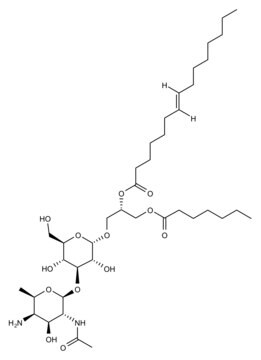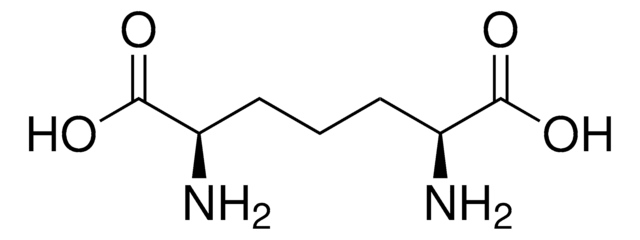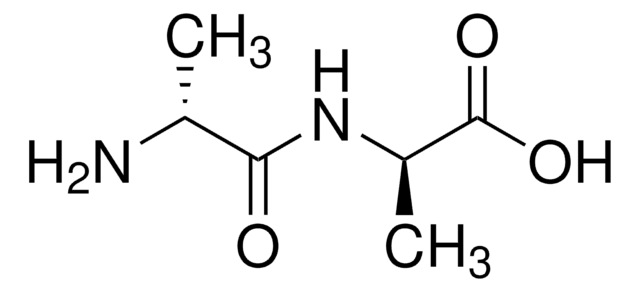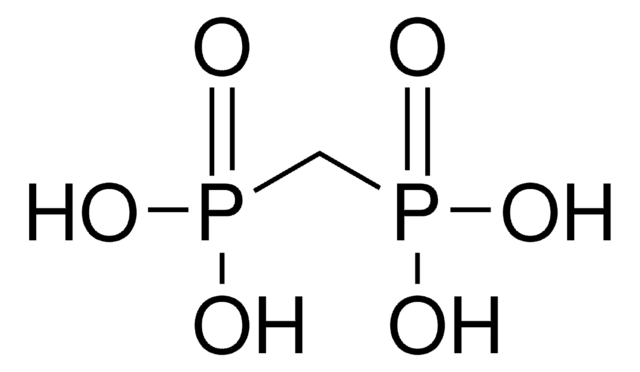Key Documents
A9519
N-Acetylmuramyl-L-alanyl-D-isoglutamine hydrate
≥98% (TLC), suitable for ligand binding assays
Synonim(y):
Adjuvant Peptide, Muramyl dipeptide
About This Item
Polecane produkty
product name
N-Acetylmuramyl-L-alanyl-D-isoglutamine hydrate, ≥98% (TLC)
Poziom jakości
Próba
≥98% (TLC)
Postać
powder
metody
ligand binding assay: suitable
kolor
white
Zastosowanie
cell analysis
temp. przechowywania
−20°C
ciąg SMILES
C[C@H](NC(=O)[C@@H](C)O[C@H]1[C@H](O)[C@@H](CO)OC(O)[C@@H]1NC(C)=O)C(=O)N[C@H](CCC(O)=O)C(N)=O
InChI
1S/C19H32N4O11/c1-7(17(30)23-10(16(20)29)4-5-12(26)27)21-18(31)8(2)33-15-13(22-9(3)25)19(32)34-11(6-24)14(15)28/h7-8,10-11,13-15,19,24,28,32H,4-6H2,1-3H3,(H2,20,29)(H,21,31)(H,22,25)(H,23,30)(H,26,27)/t7-,8+,10+,11+,13+,14+,15+,19?/m0/s1
Klucz InChI
BSOQXXWZTUDTEL-QAQREVAFSA-N
Szukasz podobnych produktów? Odwiedź Przewodnik dotyczący porównywania produktów
Powiązane kategorie
Amino Acid Sequence
Zastosowanie
Działania biochem./fizjol.
Opakowanie
Kod klasy składowania
11 - Combustible Solids
Klasa zagrożenia wodnego (WGK)
WGK 3
Temperatura zapłonu (°F)
Not applicable
Temperatura zapłonu (°C)
Not applicable
Środki ochrony indywidualnej
Eyeshields, Gloves, type N95 (US)
Certyfikaty analizy (CoA)
Poszukaj Certyfikaty analizy (CoA), wpisując numer partii/serii produktów. Numery serii i partii można znaleźć na etykiecie produktu po słowach „seria” lub „partia”.
Masz już ten produkt?
Dokumenty związane z niedawno zakupionymi produktami zostały zamieszczone w Bibliotece dokumentów.
Klienci oglądali również te produkty
Nasz zespół naukowców ma doświadczenie we wszystkich obszarach badań, w tym w naukach przyrodniczych, materiałoznawstwie, syntezie chemicznej, chromatografii, analityce i wielu innych dziedzinach.
Skontaktuj się z zespołem ds. pomocy technicznej











